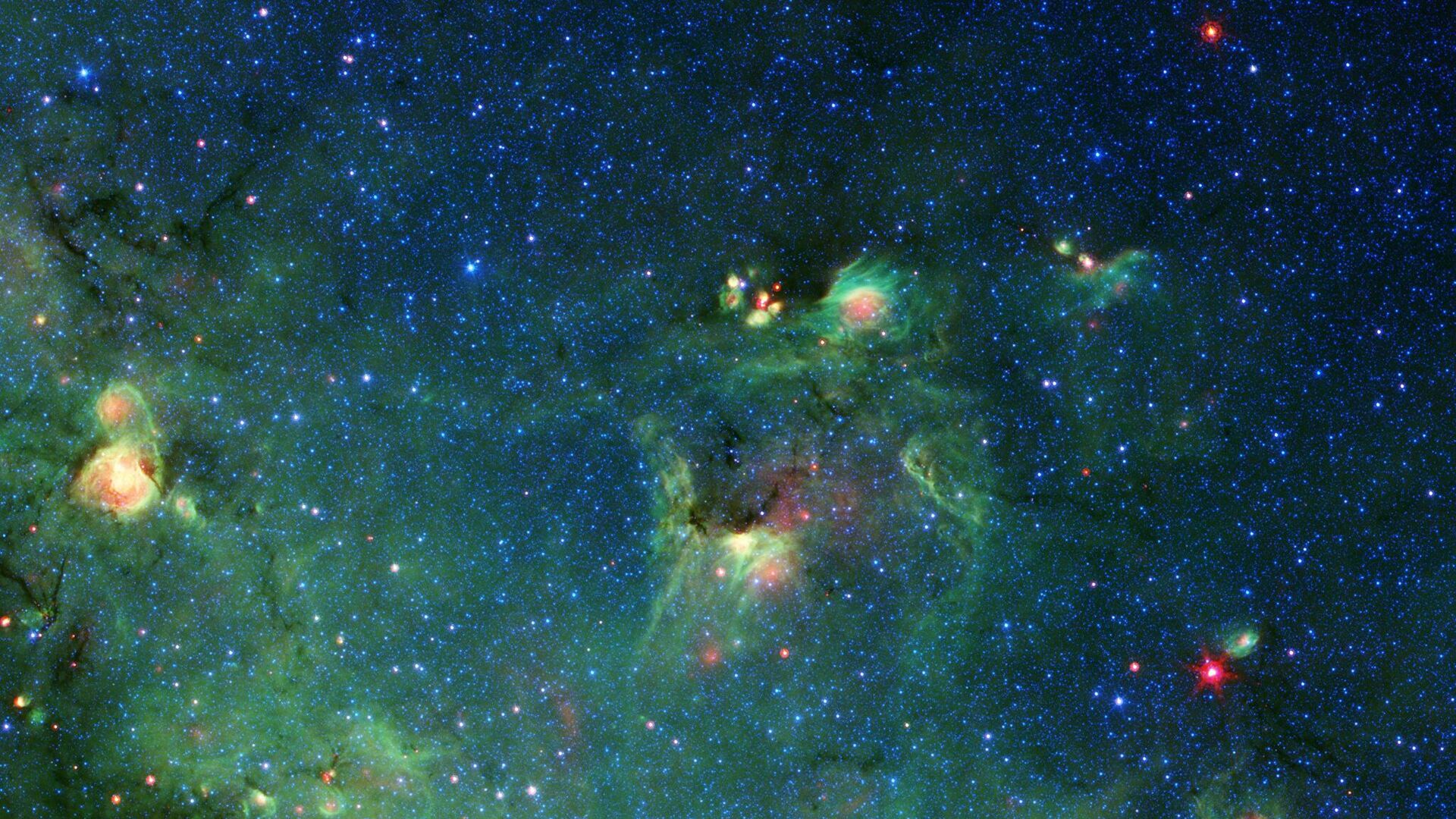Not a Unicorn! Take a Look at NASA's Newly Released Photo of Nebula That Resembles Godzilla
03:42 GMT 28.10.2021 (Updated: 16:59 GMT 12.04.2023)

© NASA . NASA/JPL-Caltech
Subscribe
A nebula is a massive cloud of dust and gas that exists between stars and serves as a nursery for young stars. When a star larger than our sun begins to die and emits a solar-wind of gas, nebulae develop.
NASA has released an astounding photograph of a colorful nebula that may or may not be reminiscent of the famous Japanese pop culture monster, Godzilla.
The bright dots sure look like Godzilla's piercing eyes, and a protruding snout can also be seen in the image, which was acquired by the now-retired Spitzer Space Telescope.
This nebula, which can be found in the constellation Sagittarius in the southern celestial hemisphere, is speckled with incredible kaleidoscopic colors that represent different wavelengths of infrared light.
"Located about 7,800 light-years from Earth, the bright region in the lower left, appearing as Godzilla’s right hand, is known as W33," NASA said in a press release.
For those in whom the inner artist is ready to shine with might and main, NASA offers a web application for drawing what you can see on a photo of nebulae.
In case you missed it, the imaginary monster is brought to life by a stencil drawn around the nebula.
We look at clouds & let our imaginations run wild. In the spirit of Halloween, this nebula – a cloud of gas & dust – looks a bit like Godzilla. The star-forming region was captured by NASA’s retired Spitzer Space Telescope. See what the colors represent: https://t.co/RkQqfk2SpR pic.twitter.com/8qqwicyDZk
— NASA JPL (@NASAJPL) October 26, 2021
NASA's Jet Propulsion Laboratory, which is controlled by the nearby California Institute of Technology, released the new photo.
“I wasn’t looking for monsters,” said Caltech astronomer Robert Hurt, who spotted the creature while processing pictures. “I just happened to glance at a region of sky that I’ve browsed many times before, but I’d never zoomed in on. Sometimes if you just crop an area differently, it brings out something that you didn’t see before. It was the eyes and mouth that roared ‘Godzilla’ to me.”
However, Hurt is not the only scientist who sees Earth-bound items in cosmic photographs. The human ability to detect a specific, often significant image amid a random or confusing visual pattern is known as pareidolia.
Spitzer photos have revealed, among other things, a black widow spider, a Jack-o-Lantern, a snake, an exposed human brain, and even the Starship Enterprise.
Godzilla, a dinosaur-like creature, also dubbed the "King of Monsters," has been the focus of one of the longest-running film franchises since his debut on the big screen in 1954.
